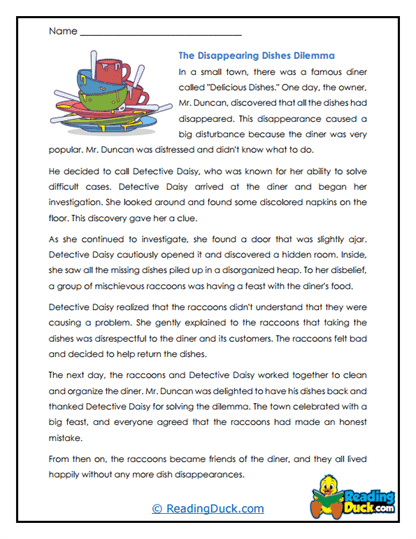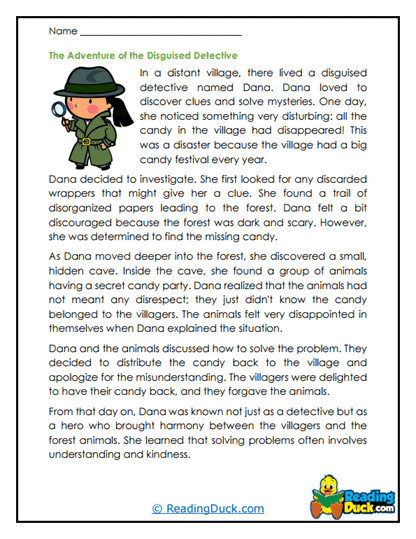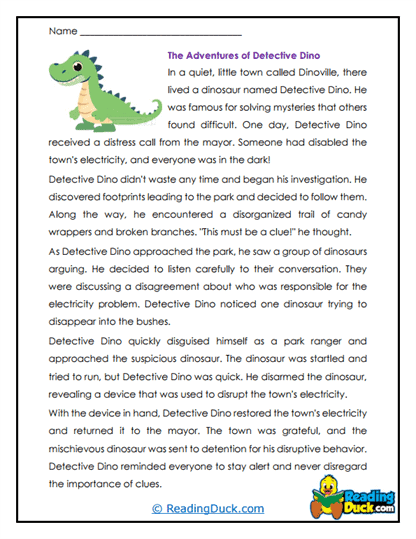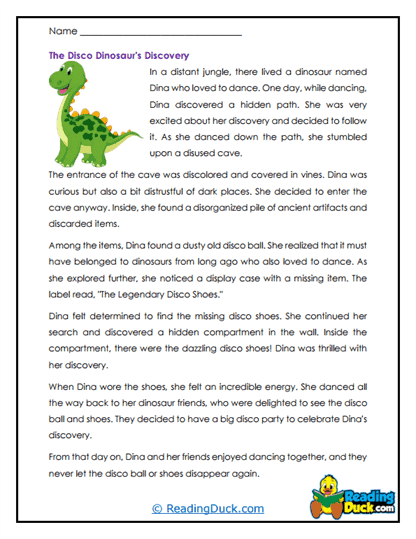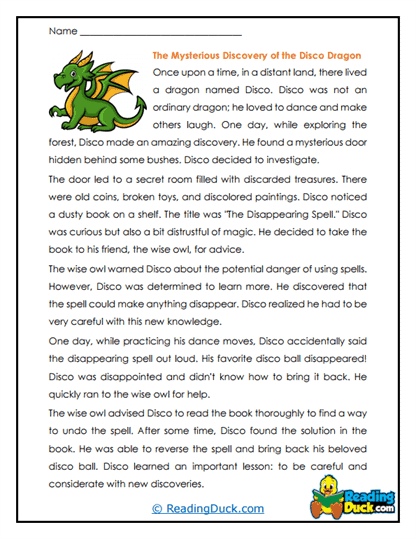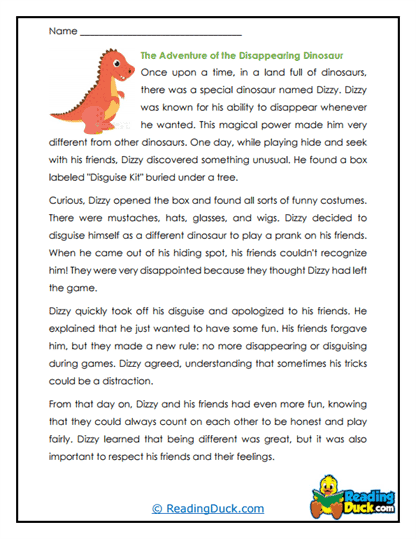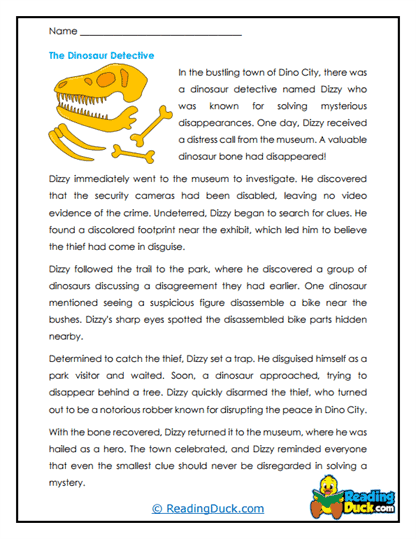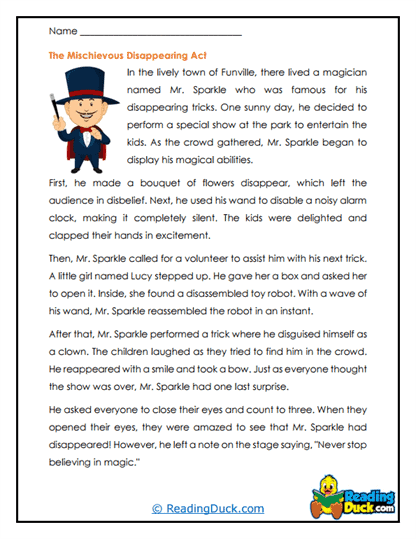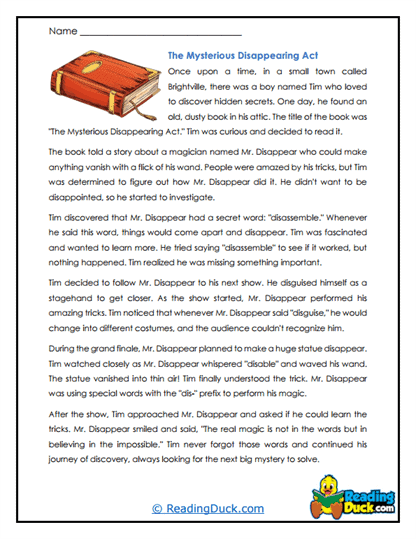Dis- Prefix Reading Passages Worksheets
About Our Dis- Prefix Reading Passages Worksheets
Our Dis- Prefix Reading Passages Worksheets are specifically designed to help students understand, recognize, and apply the meaning of the prefix "dis-" through engaging and targeted reading exercises. Each worksheet in this collection includes a carefully crafted reading passage that highlights words using the prefix "dis-" to illustrate how it alters the meaning of root words. These passages are accompanied by vibrant pictures that engage students visually and provide important context for understanding the prefix in action.
To further support comprehension, each worksheet includes multiple-choice questions. These questions test students’ ability to not only recognize the "dis-" prefix but also grasp how it changes the meaning of words within the passage. This structured practice ensures students can confidently decode new words using the prefix, improving their reading comprehension and vocabulary skills.
Our worksheets are presented in easy-to-access PDF format, making them simple to view, download, and print. Each worksheet also comes with a downloadable answer key, which provides teachers, parents, and tutors with an efficient way to grade and offer feedback. This convenient format ensures that these worksheets can be seamlessly integrated into any classroom or home learning environment, whether for independent practice, small group work, or whole-class instruction.
The Importance of Prefixes in Vocabulary Development
Prefixes are powerful tools in language learning, acting as essential building blocks that help students expand their vocabulary and improve word decoding skills. A prefix is a group of letters added to the beginning of a word, altering its meaning. By mastering common prefixes like "dis-," "pre-," "un-," and "re-," students can break down unfamiliar words and better understand their meanings, even in new contexts.
Learning prefixes enables students to:
- Recognize how words are constructed.
- Understand how the meaning of a word changes with the addition of a prefix.
- Decode unfamiliar words more easily, improving overall reading fluency and comprehension.
When students learn how prefixes work, they gain a deeper insight into the structure of language. This foundational skill is crucial for academic success, as it helps students become more confident readers who can tackle complex texts.
By regularly encountering words with prefixes in varied reading contexts, students build a mental map of how prefixes modify meanings, giving them practical tools to navigate unfamiliar vocabulary. These worksheets offer systematic exposure to common prefixes, fostering long-term retention and comprehension.
Understanding the Prefix Dis-
In this collection, the focus is on the prefix "dis-." In the English language, "dis-" typically means "not" or "the opposite of." It is often used to form negative meanings of words. Some common examples of words with this prefix include:
- Disagree (to not agree)
- Dislike (to not like)
- Disappear (to vanish or not be visible anymore)
The prefix "dis-" plays a crucial role in forming words that express negation or reversal of an action. Understanding the role of this prefix helps students grasp the nuance of how word meanings shift with its addition. Through these reading passages, students are repeatedly exposed to the "dis-" prefix, ensuring that they not only memorize it but also understand how it functions in real-world language.
Each worksheet in this collection provides multiple opportunities for students to see and apply the "dis-" prefix in context. This contextual learning ensures students develop both recognition and practical application skills. By repeatedly encountering "dis-" words in various passages, students build a stronger grasp of how this prefix modifies word meanings in everyday language.
Key Features and Benefits of These Worksheets
Our Dis- Prefix Reading Passages Worksheets offer a variety of educational benefits. Designed to enhance vocabulary and reading comprehension, these worksheets support students in becoming more fluent and confident readers. Below are the key features and benefits:
- Engaging Reading Passages: Each worksheet contains a high-interest reading passage that highlights words with the "dis-" prefix.
- Visual Support: Colorful images accompany each passage, providing visual context to help students better understand the prefix in use.
- Comprehension Questions: Multiple-choice questions test students' understanding of how the prefix alters word meanings and their comprehension of the passage as a whole.
- Printable PDF Format: Easy to download and print, these worksheets are perfect for both classroom use and home learning.
- Answer Keys Included: Each worksheet comes with an answer key for fast and easy grading, making it convenient for educators, parents, and tutors.
- Flexible Use: Ideal for independent work, small group activities, or whole-class lessons.
These features work together to create a well-rounded learning experience, helping students solidify their understanding of the "dis-" prefix and its impact on word meaning.
Tips for Classroom and Home Use
Educators, parents, and tutors can use these worksheets in a variety of ways to support student learning. Here are some practical strategies for integrating these resources into your lesson plans:
- Whole-Class Instruction: Use the worksheets as part of a prefix-focused literacy lesson. After introducing the concept of the "dis-" prefix, read the passage as a class and discuss how the prefix changes the meaning of key words.
- Small Group Work: Assign the worksheets to small groups, allowing students to work together to identify "dis-" words and answer the comprehension questions. This promotes collaborative learning and discussion around vocabulary development.
- Independent Practice: These worksheets are also perfect for independent practice, whether during class time or as a homework assignment. Students can work at their own pace, reinforcing their learning outside the classroom.
- Supplementary Resource: Use the worksheets as a supplementary resource alongside existing prefix lessons. They are ideal for reinforcing the concept of prefixes and can be integrated into a broader vocabulary-building curriculum.
By offering students consistent and structured practice with prefixes, these worksheets help strengthen their word recognition, decoding, and comprehension skills.
Supporting a Broader Vocabulary-Building Curriculum
Our Dis- Prefix Reading Passages Worksheets are part of a broader approach to vocabulary development. Prefixes like "dis-" provide students with essential tools to decode unfamiliar words and deepen their understanding of how language works. By systematically exposing students to various prefixes over time, you help them build a more comprehensive understanding of word formation.
This collection can be integrated into a broader curriculum focused on vocabulary building, ensuring that students develop a wide-ranging understanding of prefixes and their meanings. By regularly practicing with different prefixes—such as "pre-," "un-," and "re-"—students will gain the confidence to tackle new words and enhance their reading fluency.
Conclusion: Why Prefix Learning Matters
Mastering prefixes like "dis-" is a crucial step in students' vocabulary and comprehension development. By understanding how prefixes modify word meanings, students become better equipped to tackle unfamiliar words in reading passages. Our Dis- Prefix Reading Passages Worksheets provide practical, engaging, and structured practice to help students internalize these important language tools.
With these worksheets, students will build a deeper understanding of word formation, improve their vocabulary, and enhance their reading comprehension—skills that will serve them well throughout their academic journey and beyond.
